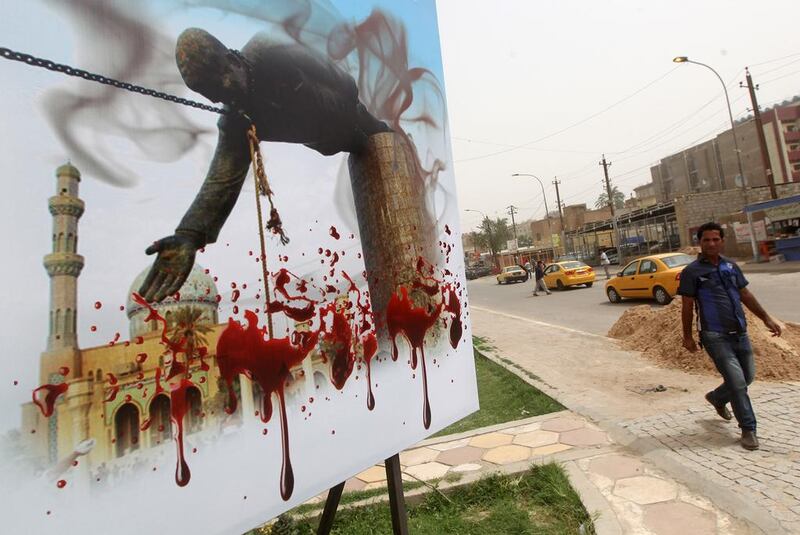Malcolm Forbes
There is a brief but memorable short story by Dostoevsky called Bobok in which a moderately successful writer goes to a cemetery and suddenly begins to hear the dead in conversation, communicating from one grave to another.
All walks of life, including a civil servant, a shopkeeper and a society lady gossip, bicker and discuss what it is like to be dead.
The narrator admits “Something strange is happening to me”, but takes solace from the fact that he is “not enough of a literary man to go out of my mind”.
In the short stories of the Iraqi-born writer Hassan Blasim, equally strange things happen to people both living and dead.
The Corpse Exhibition: And Other Stories of Iraq is a bravura collection with an abundance of madness in the method.
In one tale titled An Army Newspaper, Blasim goes further than Dostoevsky by actually waking the dead, disinterring them and making them explain how they ended up in the mortuary.
The narrator pre-empts and neutralises our scepticism with matter-of-fact explanation: corpses cannot only talk, they do so “honestly and impartially, because the dead are usually honest”.
In other stories, Blasim overrides his skewed logic by offsetting unreal escapades with too-real violence and all-too believable backdrops.
The reader quickly learns not to question Blasim, but to wallow in his bleak but magical little worlds.
As the title states, all the stories collected here are set in, or concerned with, Iraq, specifically the horrors generated and perpetrated in the last 20 years.
The first and eponymous tale is in many ways representative of the lot. A man is being briefed by a member of a shadowy art collective that tasks its artist-agents to kill people and publicly display their bodies in creative ways.
One artist’s “extraordinary work of art” consists of a woman breastfeeding her baby under a palm tree on a busy street: all three – mother, suckling child and tree – are dead.
Blasim seldom explains his actions, often preferring to have his characters explain what they are not.
The man in this story is assured that the organisation is neither a terrorist group nor a gang of killers seeking profit: “We have nothing to do with the fanatical Islamist groups or the intelligence agency of some nefarious government or any of that kind of nonsense.”
More descriptions of grisly art follow, along with the cynical world view that “every child that’s born is just an extra burden on the ship that’s about to sink”.
This murky tale ends with one last jolt, a devilish twist. We are left with a bad taste in our mouth but also food for thought.
And so armed with artistic licence and the blackest gallows humour, Blasim starts as he means to go on, taking us behind and beyond newspaper headlines and manipulating everyday accounts of threats and terror into fantastical visions.
Blasim makes the reader work. Are his dead really dead or just figments of the imaginations of his battle-scarred and nerve-shredded walking dead? Why does he resurrect some and leave others strewn and dismembered across Baghdad? Which authorial voices are to be trusted?
For sure not the narrator of The Madman of Freedom Square, whose dreamlike tale about the beneficent baraka, or spiritual power, evinced by two blond men, leads those around him to suspect a piece of shrapnel has damaged his brain.
Ambiguity reigns. Absurdity matters. Not every reader will appreciate lines such as: “The policeman went into a deep silence when he heard his wife and mother weeping at his grave” or “I was killed by friendly fire, myself”.
By the same token, many will wish for fewer lines such as “In the end, we found my father without a head, tied to farm tractor with a thick rope”.
Blasim is certainly a writer of extremes, but it pays to stick with him, to allow him to flummox or repel us, because at heart he is a skilled storyteller.
Bombs do go off and characters suffer, and, at times, what we read is, defiantly, violence for violence’s sake – but how else to accurately portray Iraq?
However, Blasim dilutes the bloodbaths with those trickles of surrealism and dimly lights his charnel house with guttering flares of wit.
What’s more, his mind-bendingly bizarre (and brutal) antics come studded with air-bubbles of lucidity in which we re-evaluate the credibility of chronicled events and sift the odd kernel of possible truth.
The Corpse Exhibition: And Other Stories of Iraq is, ultimately, as sobering as last year’s The Corpse Washer by Blasim’s compatriot, Sinan Antoon.
In 2012, a severely edited version of Blasim’s stories was finally published in Arabic, only to be immediately banned in Jordan.
With luck, Jonathan Wright’s fluid translation won’t ruffle the feathers of too many English-speaking readers, for Blasim deserves a wider audience, one ready to be shocked and awed by these pitch-black fairytales.
Malcolm Forbes is a freelance essayist and reviewer.






